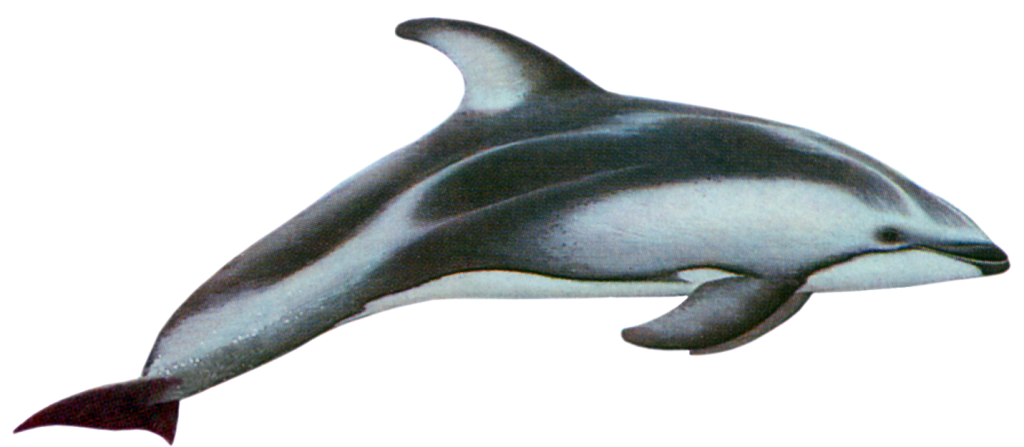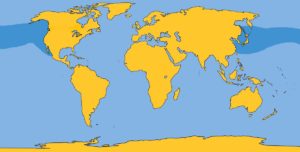Family: Delphinidae
Genus: Lagenorhynchus
Species: L. obliquidens Gill, 1865
Like its Atlantic counterpart, the Pacific white-sided dolphin is marked by soft, subtle color patterns. At sea it often leaps from the water, cavorting, gamboling, and seeming to do nearly anything to make a splash. These are avid bow wave riders. They normally inhabit deep-sea regions.
Physical Description: They possess a small, poorly demarcated beak.
Color: The dorsal area is soft black extending to and including the flukes. The beak is black, extending to include the eyes. The flippers and dorsal fin are black blending to white on their trailing margins. The flanks are gray with a thin white stripe from the side of the peduncle extending up the dorsal region to the end of the forehead.
Fins and Flukes: The dorsal fin is large, falcate, and rounded; more pointed than triangular and less falcate in the young. The flippers are small, well developed and rounded at the tips. The flukes are also well developed, rounded at the tips with a definite median notch.
Length and Weight: These animals reach 7 to 8 ft (2.1 to 2.4 m) and at least 330 lb (150 kg).
Teeth: 23 to 33 small, conical teeth are found in each side of the upper and lower jaws.
Feeding: Hake, anchovy, squid, herring, and sardine.
Breathing and Diving: They can spend up to two minutes underwater, but the diving and breathing rates are dependent on herd movement or feeding conditions.
Mating and Breeding: Mating and calving season is during summer and early fall. The 31 to 37 in (80 to 94 cm) calves are born after a 12-month gestation period.
Herding: Up to 1,000, in groups of up to 40. Ordinarily homogeneous, they are nonetheless often found with striped, common, and northern right whale dolphins, plus Risso’s dolphins.
Distribution: North Pacific Ocean. They frequent the waters off the coast of North America from southeastern Alaska to Baja; off the coast of Asia from the Kuril Islands to Japan.
Migration: Apparently north in spring; south in autumn, within their range.
PACIFIC WHITE-SIDED DOLPHINS DISTRIBUTION







